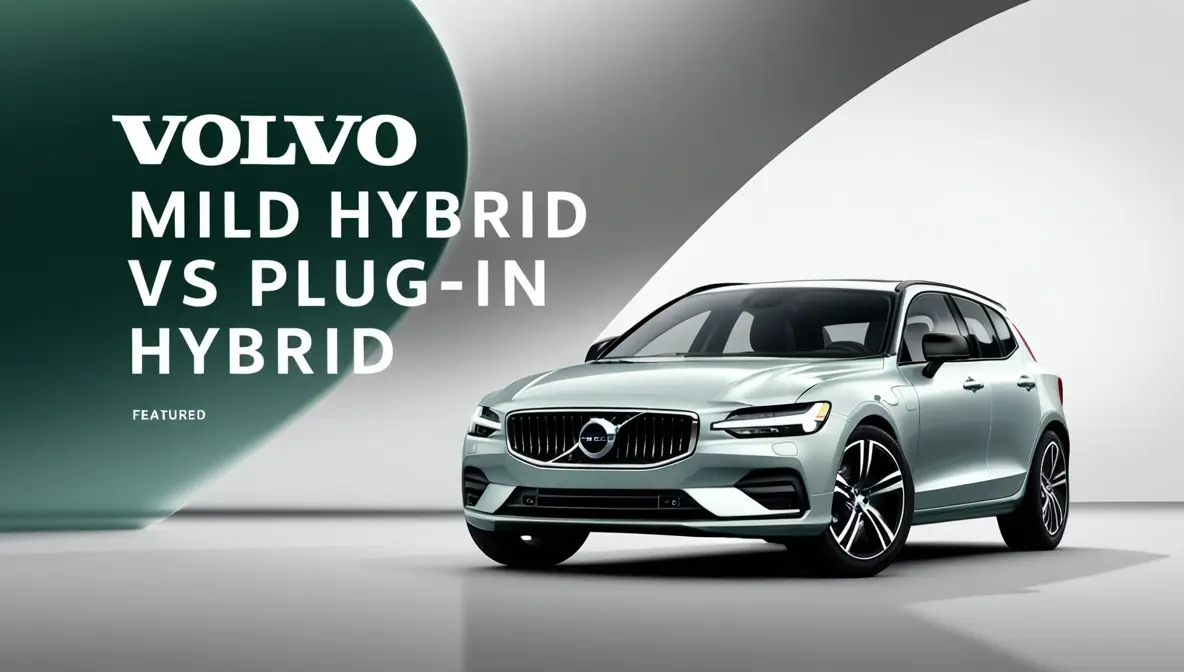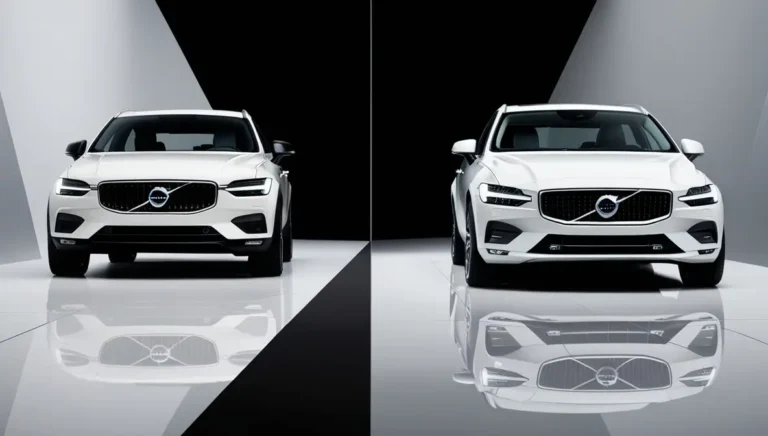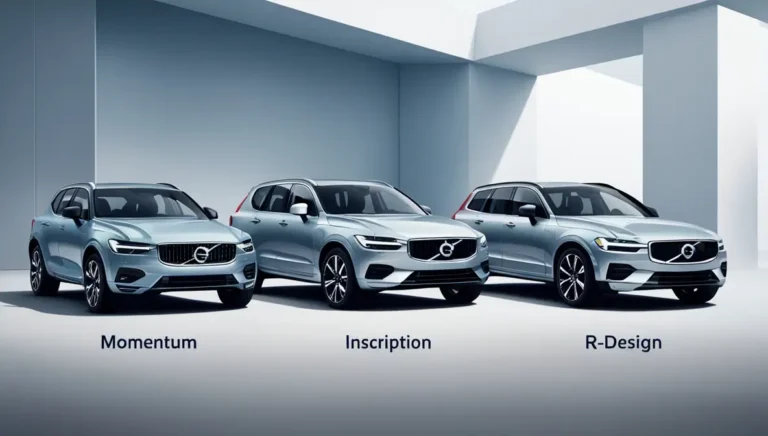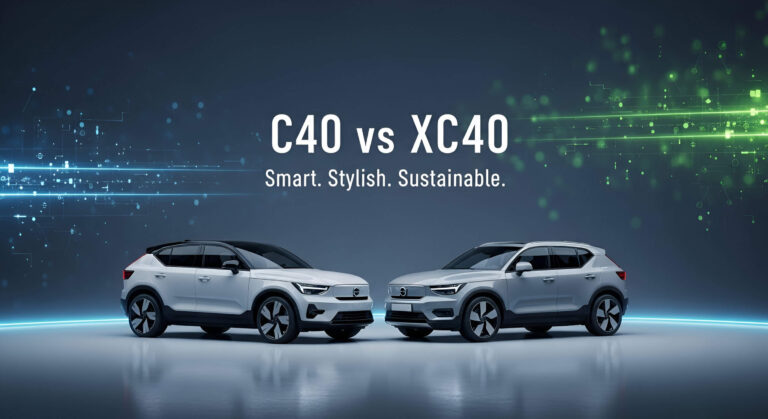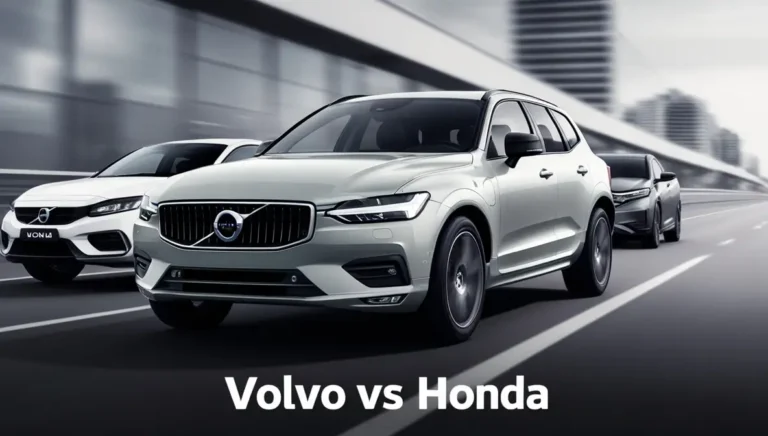Volvo Mild Hybrid vs Plug-in Hybrid: A Complete Comparison
You’re standing in a Volvo showroom, torn between two beautiful vehicles that both promise to be eco-friendly. One’s a mild hybrid, the other’s a plug-in hybrid, and you’re wondering, “What’s the real difference?” Don’t worry – I’ve been there, too, and I’m here to guide you through this automotive maze with some real talk and practical insights.
The key difference? Plug-in hybrids can run on pure electric power for about 30-40 miles, while mild hybrids use their electric motor to assist the gas engine. Think of a mild hybrid as a helping hand for your gas engine, while a plug-in hybrid is like having two cars in one – an electric vehicle for daily commutes and a gas-powered car for longer trips.
If you rarely drive more than 30 miles a day and have access to a charging point at home, a plug-in hybrid could slash your fuel costs by up to 70%!
Understanding Hybrid Technology in Modern Vehicles
What is a Hybrid?
Remember when phones were just for calling? Well, cars have evolved similarly. Today’s hybrids are like smartphones of the automotive world – they combine traditional engines with electric power to create something better than the sum of their parts.
Think of a hybrid as a tag-team wrestling duo. You’ve got the gasoline engine (the heavyweight) and the electric motor (the agile partner) working together to give you better performance while using less fuel. The electric motor helps most during acceleration and low-speed driving when regular cars gulp the most gas.
Fun Fact: The first hybrid car was built in 1899 by Ferdinand Porsche! Talk about being ahead of your time.
Types of Hybrids Explained
Mild Hybrid (MHEV)
A mild hybrid is like having a really strong cup of coffee – it boosts your regular engine when it needs it most. The system uses a small 48-volt battery and a starter generator that helps the engine during acceleration and makes the start-stop system smoother than butter on hot toast.
Last summer, I test-drove a Volvo XC60 mild hybrid, and the seamless way it switched the engine off at traffic lights was impressive – no more of that awkward shuddering you get in regular cars.
Plug-in Hybrid (PHEV)
Now, plug-in hybrids are more like having a Swiss Army knife in car form. They come with a much larger battery (usually around 18.8 kWh in modern Volvos) and can run entirely on electric power for your daily commute. Then, when you need to go further, the gas engine kicks in like a backup generator.
Feature Mild Hybrid Plug-in Hybrid
Battery Size 48V (0.4-0.9 kWh) 18.8 kWh
Electric-Only Range None 30-40 miles
Charging Required No Yes
Fuel Savings 10-15% Up to 70%
Volvo’s Mild Hybrid vs. Plug-in Hybrid: Key Differences
Power Sources and Charging Requirements
Let’s break this down in a way that makes sense. Coming from someone who’s owned both types, the charging situation is like comparing a solar calculator to a smartphone. Mild hybrids are self-sufficient – they charge themselves through braking, just like that solar calculator that never needs batteries.
Plug-in hybrids, though? They’re more like your phone – they need a proper charge to work at their best. I’ve gotten into a comfortable routine of plugging in my Volvo XC90 Recharge every night, just like I do with my phone. Most Volvo PHEVs take about 5 hours to charge fully on a home charger.
Pro Tip: Install a home charging point for your PHEV, and you’ll save about 2-3 hours on charging time compared to using a regular wall socket!
Battery and Range Comparison
Here’s where things get interesting. Remember that mild hybrid battery I mentioned? It’s like having a backup singer – helpful but not taking center stage. The mild hybrid system improves fuel economy but can’t power the car independently.
Conversely, a Volvo plug-in hybrid is like having a lead singer who can carry the whole show. The latest models can cover about 35-40 miles on pure electric power – enough for most daily commutes! Last month, I went two weeks without using any gas in my PHEV because my daily routine fell within that electric range.
Daily Commute Best Choice Why?
Under 30 miles, a PHEV Can run purely on electricity.
Over 50 miles Either works well: PHEV for partial electricity, MHEV for consistent efficiency.
Lots of city driving PHEV Maximum fuel savings in stop-go traffic
Mainly highway MHEV Consistent efficiency without charging needs
Performance and Acceleration Differences
Here’s something that might surprise you – both systems have their performance perks, but in different ways. The mild hybrid is like having an invisible helping hand. It adds about 14 horsepower during acceleration, making the car feel more responsive when you need it.
But the plug-in hybrid? That’s a different beast entirely. When you combine both power sources, you’re looking at a significant power boost – often adding 100+ horsepower to the base engine. Last week, I had to merge onto a busy highway, and let me tell you, that extra punch comes in handy!
Volvo’s plug-in hybrid system can accelerate their family SUVs faster than some sports cars!
Environmental Impact and Fuel Efficiency
CO₂ Emissions and Fuel Savings
Let’s talk real numbers here because who doesn’t love saving both the planet and their wallet? Mild hybrids typically reduce fuel consumption by about 10-15% compared to their non-hybrid counterparts. Not bad, right?
But plug-in hybrids can take it to another level. If you’re mainly doing short trips and charging regularly, you could see fuel consumption drop by up to 70%. I’ve been tracking my fuel usage, and here’s what I’ve found:
Copy
Monthly Fuel Savings Comparison (Based on 1,000 miles/month):
Regular Car: $180 in fuel
Mild Hybrid: $153 in fuel ($27 saved)
Plug-in Hybrid: $54 in fuel ($126 saved)
Volvo’s Sustainability Goals and Green Technology
Volvo isn’t just dipping their toes in the green pool – they’re doing a full cannonball! Their commitment to going fully electric by 2030 isn’t just corporate talk. Every hybrid they release gets more efficient, with better technology and longer electric ranges.
I recently visited a Volvo factory, and let me tell you, they’re serious about sustainability. They’re even using recycled materials in their interiors – that fancy carpet you’re stepping on might have been a fishing net in its previous life!
Quick Tip: Looking for the greenest option? A PHEV driven mainly in electric mode can reduce your carbon footprint by up to 80% compared to a regular gas car!
User Experience and Driving Dynamics
Comfort and Convenience for City Driving
Let me paint you a picture of my typical Monday morning in downtown traffic. In my previous Volvo mild hybrid, the stop-start system was smooth as silk – no jarring vibrations when the engine kicked back in, unlike some older cars that feel like they’re having hiccups.
But here’s where it gets interesting with my current plug-in hybrid. In pure electric mode, it’s whisper-quiet. You could practically sneak up on pigeons (though I don’t recommend it – they hold grudges). The silence makes city driving feel almost zen-like, especially during those stress-inducing parallel parking maneuvers.
Long-Distance and Highway Performance
Remember road trips before hybrid cars? I do – they were like watching your fuel gauge drop faster than your phone battery at a concert. Both hybrid systems have changed the game but in different ways.
Mild hybrids excel at Highway cruising, maintaining a steady efficiency that’ll make you forget it’s even a hybrid. During a recent 300-mile road trip, my friend’s XC60 mild hybrid averaged an impressive 38 mpg!
The plug-in hybrid? It’s like having two cars in one:
Driving Mode Best Used For What to Expect
Pure Electric City/Short trips Silent running, 35-40 mile range
A hybrid Mixed driving System chooses the best power source
Power Performance: Combined power for maximum oomph
Hold Highway Saves battery for later
Costs, Rebates, and Economic Value
Purchase Price and Incentives
Let’s talk money – because, let’s face it, that’s a huge part of the decision! Here’s what you’re looking at in 2024:
Mild Hybrid Premium: Typically adds $1,000-2,000 to the base price. PHEV Premium: Usually $5,000-8,000 more than the equivalent mild hybrid
But wait, there’s more (and this time, it’s good news)! PHEVs often qualify for government incentives that can knock thousands off the price. I managed to save $7,500 through federal tax credits on my PHEV purchase – that’s like getting a year’s worth of fancy coffee for free!
Money-saving tip: Some states offer additional incentives for PHEVs, and many power companies have special rates for overnight charging!
Maintenance and Operating Costs
Here’s the real scoop on keeping these machines running smoothly. Based on my experience and extensive chats with Volvo service techs:
Mild Hybrid Maintenance:
- Similar to regular cars (big plus!)
- Oil changes every 10,000 miles
- Brake pads last longer thanks to regenerative braking
- No special charging equipment is needed
Plug-in Hybrid Maintenance:
- Two powertrains to maintain
- Longer brake pad life
- Less frequent oil changes if you drive mostly electric
- Home charger installation: $500-1,500
But here’s the kicker – my monthly running costs:
Monthly Operating Costs (Based on 1,000 miles):
Mild Hybrid:
– Fuel: $153
– Maintenance: ~$45
Total: ~$198
Plug-in Hybrid:
– Fuel: $54
– Electricity: $30
– Maintenance: ~$55
Total: ~$139
Deciding Between Mild Hybrid and Plug-in Hybrid for Your Lifestyle
When to Choose a Mild Hybrid
Do you know how sometimes the simplest solution is the best? A mild hybrid might be your perfect match if:
- You don’t have access to home charging
- You regularly drive long distances
- You want the most hassle-free experience
- You’re looking for the lower initial cost option
I recommended a mild hybrid to my sister, who lives in an apartment without charging access, and she’s been thrilled with the decision. It’s like getting the benefits of hybrid technology without changing your routine.
When to Choose a Plug-in Hybrid
A PHEV might be your soulmate if:
- You can charge at home
- Most of your daily drives are under 35 miles
- You want the option of zero-emission driving
- You’re serious about reducing your carbon footprint
Track your daily mileage for a week. A PHEV could save you money if 80% of your trips are under 35 miles!
Future of Hybrid Technology and Volvo’s Electrification Plans
Volvo’s Vision for Hybrid and Electric Models
Having just returned from the latest Volvo tech showcase (yes, I’m a bit of a car nerd), I can tell you – the future looks pretty exciting! Volvo isn’t just dipping their toes into electrification; they’re diving headfirst. Their commitment to go fully electric by 2030 is reshaping their entire lineup.
But here’s what’s interesting for current hybrid shoppers: Volvo uses their hybrid models as stepping stones, continuously improving them until the big switch. Think of it like smartphones slowly replacing regular phones – each new model got smarter and more capable.
Volvo plans to launch their last new hybrid model in 2025, focusing on making it the most advanced hybrid technology they’ve ever produced!
Prospective Developments in Mild and Plug-in Hybrid Technologies
Now, let’s peek into the crystal ball (based on current developments and industry insights):
Coming Soon to Mild Hybrids:
- Enhanced regenerative braking systems that capture up to 20% more energy
- Smart coasting technology that predicts when to use electric power
- More powerful 48V systems providing longer electric assistance
PHEV Innovations on the Horizon:
- Increased electric range (targeting 50+ miles)
- Faster charging capabilities
- More intelligent power management using AI
- Vehicle-to-grid technology for power-sharing
Here’s what the next few years might look like:
Year Expected Developments Impact on Owners
2025 Last new hybrid model launch Peak hybrid technology available
2026-2028 Transition period Great deals on hybrid models
2030 Full electric lineup Strong resale value for recent hybrids
The next generation of PHEVs is rumored to include bidirectional charging, letting you power your home during outages!
Making the Smart Choice Today
After spending countless hours testing both systems and talking with fellow Volvo owners, here’s my practical advice for 2024 buyers:
If you’re buying now:
- PHEV: Consider it a future-proof investment, especially with improving charging infrastructure
- Mild Hybrid: Still a solid choice if you’re not ready for plug-in life
Think about it this way: Today’s hybrid purchase is like buying a smartphone in 2010 – you’re getting in at the perfect time when the technology is mature but still has room to grow.
Final Pro Tip: Even if you’re leaning toward a mild hybrid now, check if your area plans to expand charging infrastructure. It might make a PHEV more attractive shortly!
Wrapping It Up
Whether you choose a mild hybrid or plug-in hybrid Volvo, you get a slice of the future today. Both systems offer unique advantages, and the best choice depends on your lifestyle, charging access, and driving patterns.
As someone who’s experienced both, I can say there’s no wrong choice – just different paths to a more sustainable driving future. The mild hybrid offers effortless efficiency, while the PHEV provides a glimpse into the all-electric future that is coming sooner than we think.
Remember, the perfect car isn’t about having the most advanced technology – it’s about finding the right fit for your life. Whether that’s the subtle assistance of a mild hybrid or the dual-personality of a plug-in hybrid, Volvo’s got you covered.
Choose the mild hybrid for effortless efficiency, or go for the PHEV if you’re ready to embrace the electric revolution. Either way, you’re making a smart choice for your wallet and the planet!

